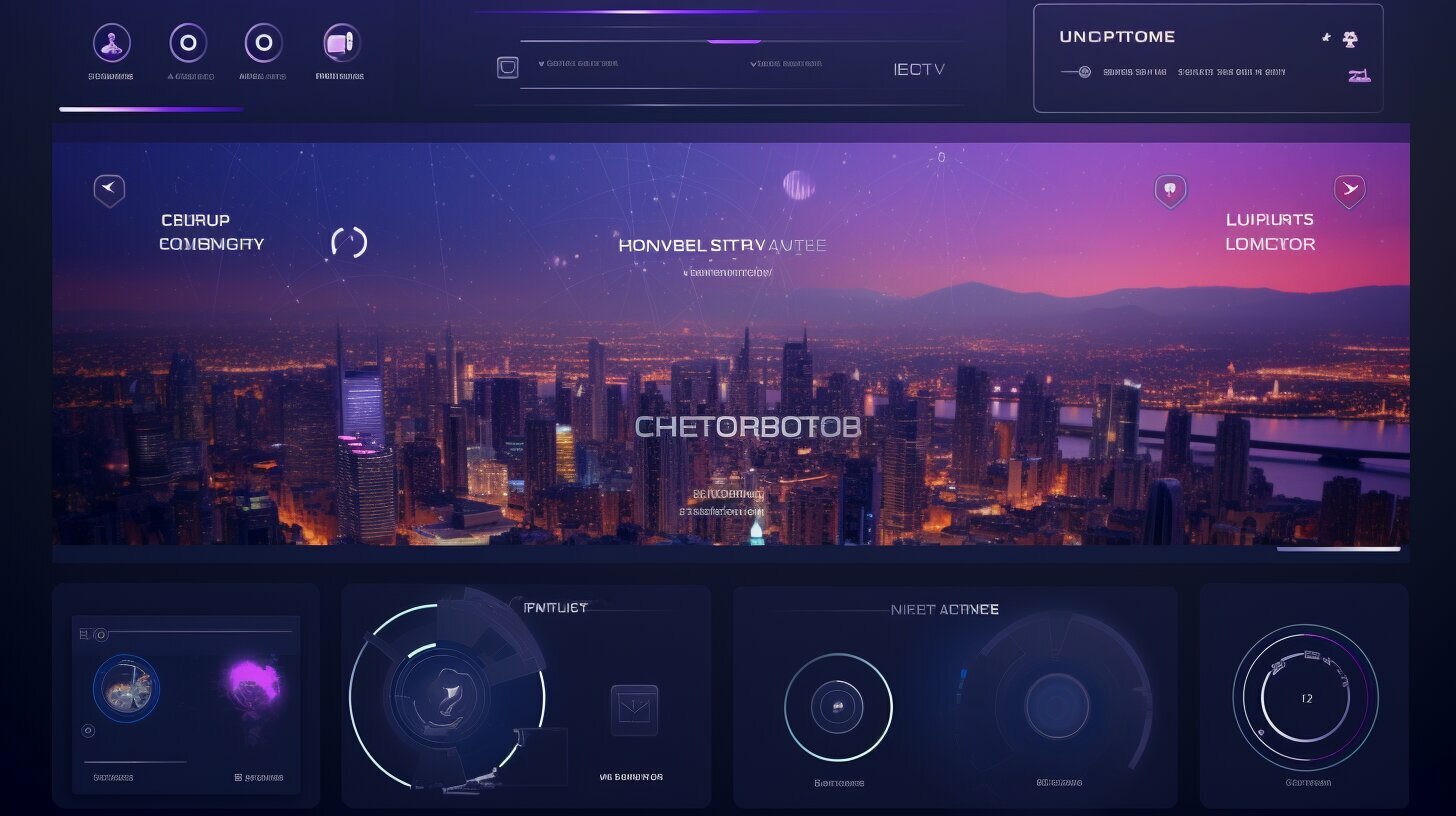Designing interactive content is crucial for agency clients looking to engage their audience and enhance user experience. Interactive content is highly effective in capturing and retaining the attention of users, providing personalized interactions, and increasing engagement. It also plays a significant role in lead generation, nurturing, scoring, segmentation, and SEO optimization.
When creating interactive content for agency clients, there are various types to consider, including quizzes, calculators, assessments, polls, product recommendation quizzes, interactive infographics, and interactive videos. Using interactive content tools can help agencies improve connections, boost engagement, increase conversions, and reduce bounce rates. Some popular tools in the market include Guides.co, ThingLink, Ceros, Involve.me, Outgrow, Zembula, SnapApp, Qzzr, Apester, Mapme, Survey Anyplace, Ion Interactive, Playbuzz, and Calculoid.
Understanding the audience is paramount when designing interactive content. By conducting thorough audience research and creating buyer personas, agencies can ensure that the interactive content they create resonates with their target audience’s preferences and behaviors.
Effective design principles are also essential for creating interactive content that delivers results. Clear objectives, a well-planned user journey, intuitive navigation, visually appealing design, and mobile responsiveness are crucial elements to consider when designing interactive content.
Measuring the performance of interactive content is vital for optimizing its effectiveness. By utilizing analytics tools, A/B testing, and gathering user feedback, agencies can continuously improve their interactive content based on user preferences and behaviors.
Embracing interactive content can revolutionize website engagement and boost conversions for agency clients. It increases time on site, reduces bounce rates, and provides a more engaging and interactive experience for users which in turn benefits the agency’s overall marketing efforts.
Key Takeaways:
- Interactive content is highly effective in engaging users and enhancing user experience.
- There are various types of interactive content that agencies can create, including quizzes, calculators, assessments, polls, and interactive videos.
- Using interactive content tools like Guides.co and Ceros can improve connections, engagement, and conversions.
- Understanding the target audience is crucial for designing interactive content that resonates with their preferences and behaviors.
- Effective design principles, such as clear objectives and intuitive navigation, are essential for creating successful interactive content.
Understanding the Benefits of Interactive Content for Agencies
Interactive content offers numerous benefits for agencies, including increased client engagement, effective content strategies, and tailored experiences for their audience. When agencies incorporate interactive elements into their content, it captures and retains the attention of users, creating a more immersive and enjoyable user experience. This increased engagement not only boosts client satisfaction but also improves the likelihood of achieving marketing goals, such as lead generation and nurturing.
One of the key advantages of interactive content is its ability to provide personalized interactions. By designing content that allows users to actively participate, agencies can tailor the experience to each individual’s preferences and needs. Whether it’s interactive quizzes, calculators, or assessments, agencies can create content that is relevant and valuable to their audience, increasing the likelihood of continued engagement and conversions.
In addition to personalized interactions, interactive content also plays a crucial role in improving SEO. Search engines prioritize user experience when ranking websites, and interactive content has proven to enhance user engagement and reduce bounce rates. By implementing interactive elements and optimizing them for search engines, agencies can improve their website’s visibility, attract more organic traffic, and ultimately, increase conversions.
Interactive Content Strategies for Agency Success
When implementing interactive content strategies, agencies should consider the specific objectives and goals they aim to achieve. Is the focus on lead generation, audience segmentation, or client nurturing? By aligning their interactive content with their overall marketing strategy, agencies can create a cohesive and effective approach that resonates with their target audience.
Table: Popular Tools for Creating Interactive Content
| Tool | Features |
|---|---|
| Guides.co | Interactive guides and tutorials |
| ThingLink | Interactive images and videos |
| Ceros | Interactive eBooks and magazines |
By leveraging popular interactive content tools like Guides.co, ThingLink, and Ceros, agencies can streamline the content creation process and deliver captivating experiences to their clients. These tools offer a range of features, from interactive guides and tutorials to interactive images and videos, empowering agencies to create engaging and interactive content that stands out.
Overall, the benefits of interactive content for agencies are manifold. From increased client engagement to effective content strategies and tailored experiences, interactive content has the potential to revolutionize website engagement and boost conversions. By understanding the audience, employing effective design principles, and continuously measuring and optimizing performance, agencies can harness the power of interactive content to maximize client satisfaction and achieve remarkable results.
Different Types of Interactive Content for Agency Clients
There are various types of interactive content that agencies can create to engage their clients, including quizzes, calculators, and interactive videos. These interactive elements not only capture the attention of users but also provide personalized interactions, enhancing the overall user experience.
One popular type of interactive content is quizzes, which allow agencies to create engaging and informative experiences for their clients. Quizzes can be used for lead generation, segmenting audiences, or providing valuable insights. They are versatile and can cover a wide range of topics, from educational quizzes to fun personality assessments.
Calculators are another effective type of interactive content that agencies can leverage. These tools enable clients to make calculations or assessments specific to their needs, helping them understand complex information and make informed decisions. For instance, a financial agency could offer a mortgage calculator, allowing clients to estimate their monthly payments based on different variables.
Interactive videos are also gaining popularity in the interactive content marketing landscape. These videos allow users to actively engage with the content by making choices or exploring different storylines. By immersing clients in an interactive narrative, agencies can create memorable experiences and establish stronger connections.
| Types of Interactive Content | Examples |
|---|---|
| Quizzes | Personality quizzes, knowledge assessments, trivia quizzes |
| Calculators | Mortgage calculators, ROI calculators, budget planners |
| Interactive Videos | Choose-your-own-adventure videos, interactive tutorials, product demos |
By incorporating these interactive elements into their strategies, agencies can provide valuable experiences that not only engage clients but also drive conversions. However, it is important to consider the target audience and choose the right type of interactive content that aligns with their interests and preferences. This ensures that the content resonates with clients, leading to better engagement, increased satisfaction, and ultimately, improved ROI.
Tools for Creating Interactive Content
To create interactive content for agency clients, there are several tools available, including Guides.co, ThingLink, and Ion Interactive. These tools provide a user-friendly interface and a range of features that make it easy to design and customize interactive content that aligns with the client’s goals and objectives.
Guides.co offers a comprehensive platform for creating interactive guides, tutorials, and courses. With its drag-and-drop editor, agencies can easily incorporate videos, images, quizzes, and interactive elements into their content. The platform also provides analytics tools to track user engagement and measure the effectiveness of the interactive content.
ThingLink is another popular tool that allows agencies to add interactive hotspots to images and videos. These hotspots can be used to provide additional information, links, or interactive elements that engage users and enhance their experience. ThingLink also offers social sharing capabilities, making it easy to distribute and promote the interactive content across various platforms.
Ion Interactive is a comprehensive platform that enables agencies to create interactive content without the need for coding or technical expertise. The platform offers a wide range of templates and interactive elements, such as quizzes, calculators, assessments, and polls. Agencies can also integrate their interactive content with other marketing tools to streamline lead generation and nurturing processes.
| Interactive Content Tools | Features |
|---|---|
| Guides.co | Drag-and-drop editor, analytics tools |
| ThingLink | Interactive hotspots, social sharing |
| Ion Interactive | Wide range of templates, integration with marketing tools |
By leveraging these interactive content tools, agencies can enhance their client-focused content and optimize it for maximum engagement. With the ability to create quizzes, calculators, assessments, and polls, agencies can capture valuable data and insights that can be used to segment their audience and personalize their marketing efforts. Additionally, these tools provide analytics and tracking capabilities, allowing agencies to measure the performance of their interactive content and make data-driven optimizations.
Overall, interactive content tools are essential for agencies looking to create compelling and engaging content for their clients. By utilizing these tools, agencies can revolutionize website engagement, increase conversions, and ultimately drive the success of their agency’s marketing efforts.
Understanding the Audience for Effective Interactive Content Design
Successful interactive content design requires a thorough understanding of the agency’s target audience and the ability to create engaging content that resonates with them. By conducting audience research and creating buyer personas, agencies can gain valuable insights into their audience’s preferences, behaviors, and pain points. Armed with this knowledge, agencies can tailor their interactive content to address these specific needs, capturing the attention and interest of their target audience.
When designing interactive content for agency clients, it is important to consider the various demographic and psychographic factors that influence their preferences. This includes factors such as age, gender, location, interests, and motivations. By creating client-focused interactive content, agencies can ensure that their content is relevant, useful, and valuable to their target audience.
Creating Engaging Content for Agencies
Engagement is a key factor in the success of interactive content. To create engaging content, agencies must focus on providing a seamless and interactive user experience. This can be achieved through personalized interactions, interactive features, and captivating visuals. By incorporating gamification elements, such as quizzes and assessments, agencies can further enhance user engagement and encourage active participation.
Additionally, agencies should consider the mobile responsiveness of their interactive content. With the increasing prevalence of mobile devices, it is crucial that the content is optimized for mobile viewing to ensure a seamless experience across different devices. Agencies can also leverage social sharing features to encourage users to share their interactive content, expanding their reach and increasing engagement.
| Type of Interactive Content | Benefits |
|---|---|
| Quizzes | Help agencies gather insights, engage users, and provide personalized recommendations. |
| Calculators | Allow agencies to provide users with valuable tools for making informed decisions. |
| Assessments | Enable agencies to evaluate user knowledge, skills, or preferences. |
| Polls | Engage users in real-time feedback collection and opinion sharing. |
| Product Recommendation Quizzes | Assist agencies in guiding users towards the most suitable products or services. |
| Interactive Infographics | Make complex information visually appealing and easier to understand. |
| Interactive Videos | Engage users with interactive elements and provide an immersive experience. |
By leveraging the different types of interactive content available, agencies can create engaging experiences that capture and retain the attention of their target audience. Through effective audience understanding, creative content design, and continuous optimization, agencies can harness the power of interactive content to revolutionize website engagement and drive conversions for their clients.
Design Principles for Interactive Content
Effective interactive content design for agency clients relies on following key design principles, including clear objectives and a well-structured user journey. By implementing these design principles, agencies can create interactive content that effectively engages their target audience and drives desired outcomes.
1. Clear Objectives
Before designing interactive content, it is important to define clear objectives. What do you want to achieve with the interactive content? Is it to educate, entertain, or collect user data? By establishing clear objectives, you can align the content design and functionality to meet those goals. This ensures that the interactive content is purposeful and meaningful to the audience.
2. Well-Planned User Journey
A well-structured user journey is crucial for interactive content. It guides users through the content and encourages them to engage with different elements. Consider the flow and sequence of interactions, ensuring that each step leads to the next in a logical and intuitive manner. This helps to keep users engaged and encourages them to explore the content further.
3. Intuitive Navigation
Intuitive navigation is key to a positive user experience with interactive content. Users should be able to easily navigate through the content, understand how to interact with different elements, and find relevant information without any confusion. Use clear labels, icons, and instructions to guide users and make navigation as seamless as possible.
4. Visually Appealing Design
A visually appealing design can captivate users and make the interactive content more engaging. Use eye-catching colors, high-quality graphics, and visually appealing layouts to create a visually stimulating experience. However, ensure that the design does not compromise the functionality and usability of the interactive content.
5. Mobile Responsiveness
In today’s mobile-driven world, it is crucial to optimize interactive content for mobile devices. Make sure that the content is responsive and adapts to different screen sizes and orientations. This ensures that users can access and interact with the content seamlessly, regardless of the device they are using.
By following these design principles, agencies can create interactive content that effectively engages their audience, achieves objectives, and delivers a satisfying user experience. It is important to continuously evaluate and refine interactive content based on user feedback and data insights, allowing for ongoing optimization and improvement.
Measuring Performance and Optimizing Interactive Content
Measuring the performance of interactive content and making data-driven optimizations is essential to ensure its success for agency clients. By analyzing key metrics and user behavior, agencies can gain valuable insights into the effectiveness of their interactive content and make informed decisions to improve engagement and conversions. Here are some best practices for measuring and optimizing interactive content:
1. Set clear objectives: Before implementing interactive content, agencies should define specific goals and key performance indicators (KPIs). This could include metrics such as click-through rates, time spent on content, form completions, or social shares. By setting clear objectives, agencies can focus on measuring the right metrics and optimizing accordingly.
2. Track user interactions: Utilize analytics tools to track user interactions with interactive content. This includes monitoring the number of views, interactions, and completions, as well as the pathways users take within the content. By collecting this data, agencies can identify areas of high engagement and areas that may need improvement.
3. Implement A/B testing: Testing different variations of interactive content can provide valuable insights into user preferences and optimize its performance. Agencies can experiment with different designs, calls-to-action, or interactive elements to determine which versions yield the best results. A/B testing allows agencies to make data-driven decisions and improve conversion rates.
| Benefits of Measuring and Optimizing Interactive Content | |
|---|---|
| 1. | Identify areas of high engagement |
| 2. | Optimize interactive content for better conversions |
| 3. | Improve user experience and engagement |
| 4. | Make data-driven decisions for content improvements |
4. Gather user feedback: Solicit feedback from users to gain insights into their preferences and experiences with interactive content. This can be done through surveys, feedback forms, or social media listening. User feedback can provide valuable qualitative data that complements the quantitative data gathered through analytics tools, helping agencies to refine their interactive content further.
By consistently measuring and optimizing interactive content, agencies can maximize its effectiveness in engaging users and achieving their clients’ goals. Through data-driven decision-making, agencies can improve engagement, conversions, and overall user experience, leading to better results for their agency clients.
Revolutionizing Website Engagement with Interactive Content
By incorporating interactive content into their websites, agencies can revolutionize user engagement and achieve higher conversion rates. Interactive content, such as quizzes, calculators, assessments, and polls, provides personalized and engaging experiences that capture the attention of users and keep them on the site longer. This not only increases user satisfaction but also reduces bounce rates and improves overall website performance.
One way agencies can leverage interactive content is by using interactive infographics and videos. These visually appealing and interactive formats allow users to explore and engage with the information in a more meaningful way. They can provide valuable insights, educate users about products or services, and enhance brand storytelling, ultimately leading to increased user engagement and higher conversion rates.
When creating interactive content, it is important to choose the right tools. Popular interactive content tools such as Guides.co, ThingLink, Ceros, and Involve.me offer a range of features and functionalities that can enhance user interactions. These tools enable agencies to create interactive content with ease, providing options for customization, analytics tracking, and integration with other marketing platforms.
Maximizing Conversion Opportunities with Interactive Content
Effective design principles are key to maximizing the impact of interactive content. Clear objectives, a well-planned user journey, intuitive navigation, visually appealing design, and mobile responsiveness are all crucial factors to consider. By aligning interactive content with the goals and preferences of the target audience, agencies can create highly engaging experiences that drive conversions.
Measurement and optimization are critical for success. Agencies should use analytics tools to track the performance of their interactive content, gather user feedback, and conduct A/B testing to identify areas for improvement. By continuously refining and optimizing interactive content based on user preferences and behaviors, agencies can ensure that their website engagement and conversion rates continue to improve over time.
| Interactive Content Tools | Features |
|---|---|
| Guides.co | Customizable interactive content creation |
| ThingLink | Interactive image and video creation |
| Ceros | Drag-and-drop interactive content builder |
| Involve.me | Multi-channel interactive content creation |
In conclusion, interactive content offers agencies a powerful tool to revolutionize website engagement and drive higher conversion rates. By understanding their audience, choosing the right type of interactive content, following design principles, and continuously measuring and optimizing performance, agencies can create unique and engaging experiences that resonate with users. Embracing interactive content can transform websites into dynamic and interactive platforms that capture the attention of users, enhance user experience, and ultimately boost conversions.
Conclusion
Designing interactive content for agency clients is a powerful strategy that can significantly enhance engagement, satisfaction, and return on investment. Interactive content captivates users by providing personalized interactions and enhancing their overall experience. Through interactive content, agencies can effectively generate leads, nurture relationships, and segment their audience for targeted marketing efforts. Moreover, interactive content plays a crucial role in improving search engine optimization, making it easier for agencies to increase their online visibility and attract organic traffic.
There are various types of interactive content that agencies can create to engage their clients. Quizzes, calculators, assessments, polls, and interactive infographics are just a few examples of the interactive experiences that can be tailored to meet the unique goals and objectives of agency clients. By utilizing interactive content tools such as Guides.co, ThingLink, Ceros, and more, agencies can enhance connections, boost engagement, and drive conversions.
It is essential for agencies to deeply understand their target audience to create effective interactive content. By conducting thorough audience research and creating buyer personas, agencies can tailor their interactive content to match the preferences and behaviors of their clients. Additionally, following design principles such as establishing clear objectives, mapping out a well-planned user journey, and ensuring intuitive navigation will further optimize the effectiveness of interactive content.
Continuously measuring the performance of interactive content and making adjustments based on user feedback and data analytics is key to maximizing its effectiveness. By understanding how users interact with the content and optimizing it accordingly, agencies can enhance user satisfaction and drive better results. Ultimately, embracing interactive content can revolutionize website engagement, increasing time spent on site, reducing bounce rates, and ultimately leading to higher conversions for agency clients.
FAQ
Q: What is interactive content?
A: Interactive content refers to digital content that actively engages users and allows them to actively participate or interact with the content. It can include quizzes, calculators, assessments, polls, product recommendation quizzes, interactive infographics, and interactive videos.
Q: Why is interactive content effective?
A: Interactive content is highly effective in capturing and retaining the attention of users. It enhances user experience, increases engagement, and provides personalized interactions, leading to improved lead generation, nurturing, scoring, segmentation, and SEO.
Q: What are some popular interactive content tools?
A: Some popular interactive content tools include Guides.co, ThingLink, Ceros, Involve.me, Outgrow, Zembula, SnapApp, Qzzr, Apester, Mapme, Survey Anyplace, Ion Interactive, Playbuzz, and Calculoid.
Q: How should interactive content be designed?
A: The design of interactive content should be effective, with clear objectives and a well-planned user journey. It should also follow basic design principles such as intuitive navigation, visually appealing design, and mobile responsiveness.
Q: How can the performance of interactive content be measured and optimized?
A: Measurement and adjustment are crucial in understanding the performance of interactive content. Analytics tools, A/B testing, and user feedback can be used to continuously optimize interactive content based on user preferences and behaviors.
Q: What are the benefits of interactive content for agencies?
A: Interactive content can increase engagement, improve client satisfaction, and boost ROI for agencies. It can also revolutionize website engagement by increasing time on site, reducing bounce rates, and boosting conversions.
Q: How should interactive content be tailored to the audience?
A: Understanding the target audience is crucial in designing effective interactive content. Techniques such as conducting audience research, creating buyer personas, and tailoring content to their preferences and behaviors can ensure the content resonates with the audience.







